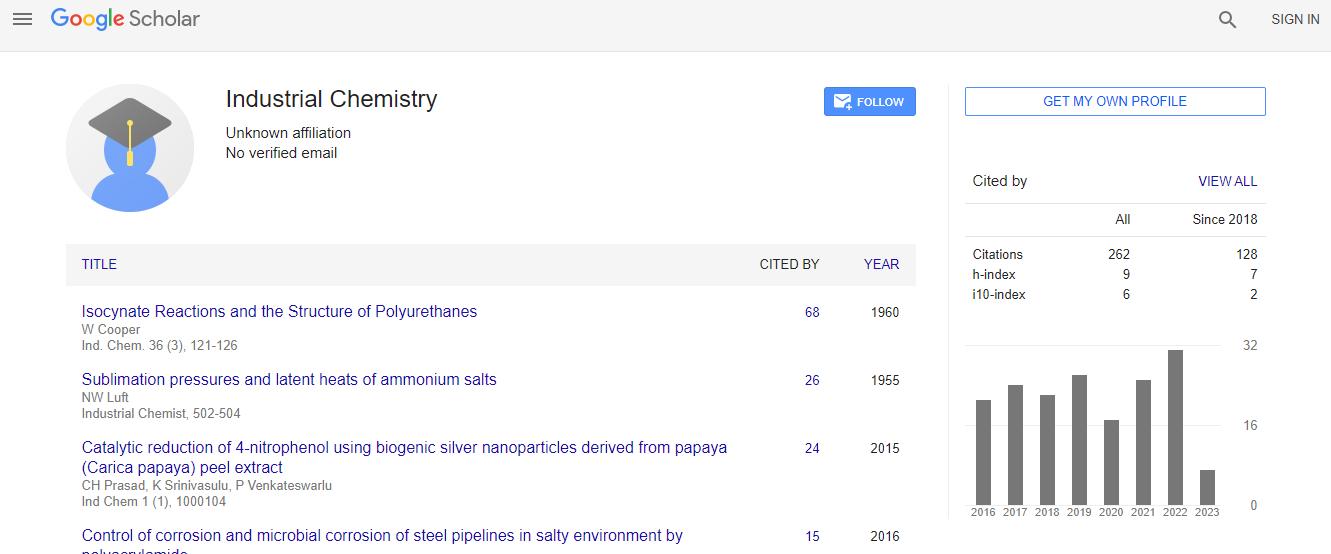Our Group organises 3000+ Global Conferenceseries Events every year across USA, Europe & Asia with support from 1000 more scientific Societies and Publishes 700+ Open Access Journals which contains over 50000 eminent personalities, reputed scientists as editorial board members.
Open Access Journals gaining more Readers and Citations
700 Journals and 15,000,000 Readers Each Journal is getting 25,000+ Readers
Google Scholar citation report
Citations : 262
Industrial Chemistry received 262 citations as per Google Scholar report
Indexed In
- Index Copernicus
- Google Scholar
- RefSeek
- Directory of Research Journal Indexing (DRJI)
- Hamdard University
- EBSCO A-Z
- OCLC- WorldCat
- Scholarsteer
- Geneva Foundation for Medical Education and Research
- Euro Pub
Useful Links
Recommended Journals
Related Subjects
Share This Page
Relation between total residual oxide (TRO) and redox potential (ORP) in seawater sterilization system based on surface discharge plasma
17th International Conference on Industrial Chemistry and Water Treatment
Young Sun Mok, Byeongju Lee and Jin-Oh J
Jeju National University, South Korea
ScientificTracks Abstracts: Ind Chem
Abstract
This work investigated the sterilization of seawater using surface discharge plasma. In this system, the surface plasma produced ozone and short-lived reactive species which were continuously dispersed and dissolved in the biologically contaminated seawater. The indirect treatment of seawater using the surface discharge plasma increased the concentration of total residual oxidant (TRO) by the reaction between ozone and bromine anion that is abundant in seawater to form hypobromite (BrO-). The hypobromite is the main constituent of TRO and can act as a strong oxidant capable of sterilizing bacteria. The seawater treatment was carried out in a semi-batch system consisting of a 1-L water-jacketed glass vessel and a gas diffuser. The seawater temperature was kept at 20oC. The gas introduced into the surface discharge plasma reactor was oxygen whose flow rate was controlled to 2Lmin-1. The seawater samples taken at a given time interval were mixed with a color reagent, and then the amount of TRO produced by the reaction with ozone was determined using a UV-Vis spectrophotometer at 515nm. The concentration of dissolved ozone and the oxidation-reduction potential (ORP) were simultaneously measured to analyze the relation between ozone, TRO and ORP. It was observed that TRO, ORP and dissolved ozone increased sharply in the early stage, and then the increases were slowed down with the lapse of time. An increase in the discharge power increased both TRO and ORP at the same time, showing a similar tendency. Based on these results, it is possible to relate ORP directly to TRO, which enables us to easily find out the optimal operating condition of the seawater sterilization system.Biography
Young Sun Mok has completed his BS degree in Chemical Engineering from Yonsei University, Seoul, Korea, in 1989, and the MS and PhD degrees in Chemical Engineering from the Korea Advanced Institute of Science and Technology (KAIST), Daejon, Korea, in 1991 and 1994, respectively. He has been with the Department of Chemical Engineering, Jeju National University, Korea, since 2000. His research interests include applications of non-thermal plasma to pollution (air/water) control, catalysis, energy production, and material syntheses.
Email:smokie@jejunu.ac.kr

 Spanish
Spanish  Chinese
Chinese  Russian
Russian  German
German  French
French  Japanese
Japanese  Portuguese
Portuguese  Hindi
Hindi 